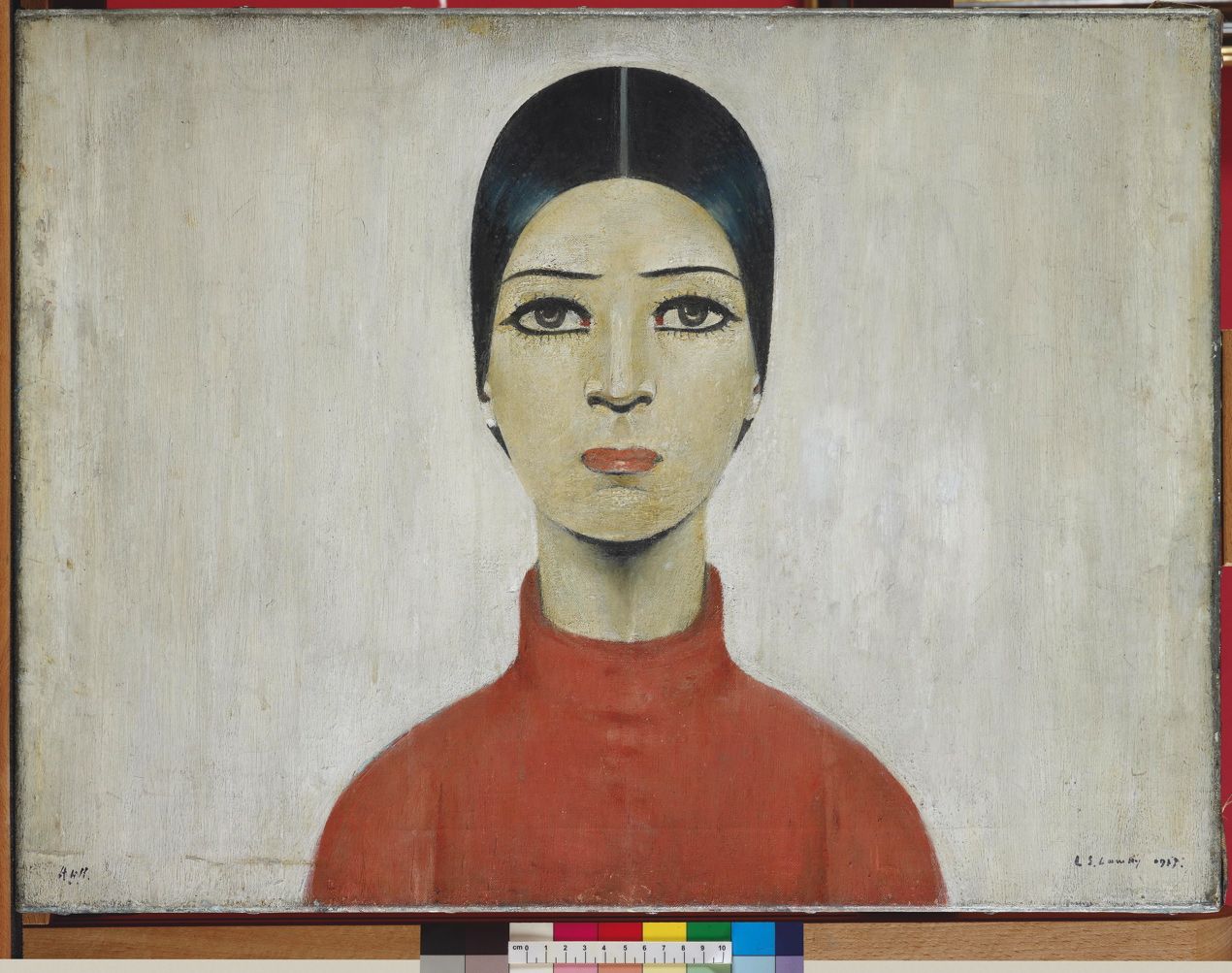Lowry and the
Pre-Raphaelites
What do paintings of Salford’s smokey tops have in common with romantic portraits of flame-haired beauties?
It may surprise many to discover that LS Lowry – famed for stylised and stark representations of the working classes in Pendlebury and Salford – was a fan of, and likely influenced by, the Pre-Raphaelite Brotherhood. Superficially the 19th century London-based movement, celebrated for returning popular art to a time of complex composition, detail and vivid colour, has little in common with Lowry’s work. Yet dig a little deeper and complex connections, along with contradictions, begin to form.
“It’s almost as if both Lowry and the Pre-Raphaelites abstracted from the real,” explains Claire Stewart, curator at the Lowry gallery in Salford. “An artist such as Dante Gabriel Rossetti, for example, constantly returned to his muse Jane Morris and stylised her over and over again, while Lowry had his often-revisited figure of ‘Ann’, who appears to be an amalgam of women he knew blended with some well-known, public characters.
“That association is there but Pre-Raphaelites such as Ford Madox Brown also brought a stricter sense of draughtsmanship back to art, which Lowry admired, whilst he was also a fan of the double-edged quality to the women they portrayed. That romanticism with a slightly sinister edge appealed to him.”
To a degree it’s the Stretford-born artist’s attitude towards women that informs the forthcoming Lowry and the Pre-Raphaelites exhibition. Although Lowry himself was far from the archetypal artist-as-loner, and in fact a rather gregarious man with many friends both male and female, he never married and was quoted as saying he’d “never had a woman”. And to say his paintings lacked the sexuality so prevalent in the work of the Pre-Raphaelite Brotherhood is something of an understatement. Unable to deal with personal closeness or even paint it, maybe Lowry preferred to romanticise the female figure from afar instead, opting to seek gratification in the work of others.
“That could well have been the allure of the Pre-Raphaelites to him,” agrees Stewart. “Some of the Rossetti pastels Lowry bought, for instance, show his female models as figures from classical myth. That edge of remoteness, as if they were painted to simultaneously appeal and repel, obviously attracted Lowry and is reflected in some of his own portrait characters, which are quite disturbing. They look you in the eye with a dark undercurrent so there is definitely that connection there.”
Lowry, who died in 1976, bought the majority of his Pre-Raphaelite originals prior to the movement becoming eminently collectable during the late- 960s. He owned one Rossetti oil painting and several of his drawings, one drawing by Ford Madox Brown and two by Edward Burne-Jones. Lowry had been a fan of the Brotherhood from at least 1911, the year that saw a large Pre-Raphaelite exhibition at Manchester Art Gallery – his personal copy of the event catalogue will be displayed as part of this new showcase.
“There hasn’t been an exhibition to discuss the connection between Lowry and the Pre-Raphaelites for over 40 years,” says Stewart. “So it’s nice to bring together these two things, which initially don’t seem to have much connection, in such a natural way. It’s lovely to see the drawings Lowry owned on the gallery walls alongside his own work; you feel you’re really getting to personally know the man.”
Lowry and the Pre-Raphaelites is at the Lowry, Salford, until 24 Feb 2019
Main image: Lowry’s portrait of Ann

Leave a reply
Your email address will not be published.